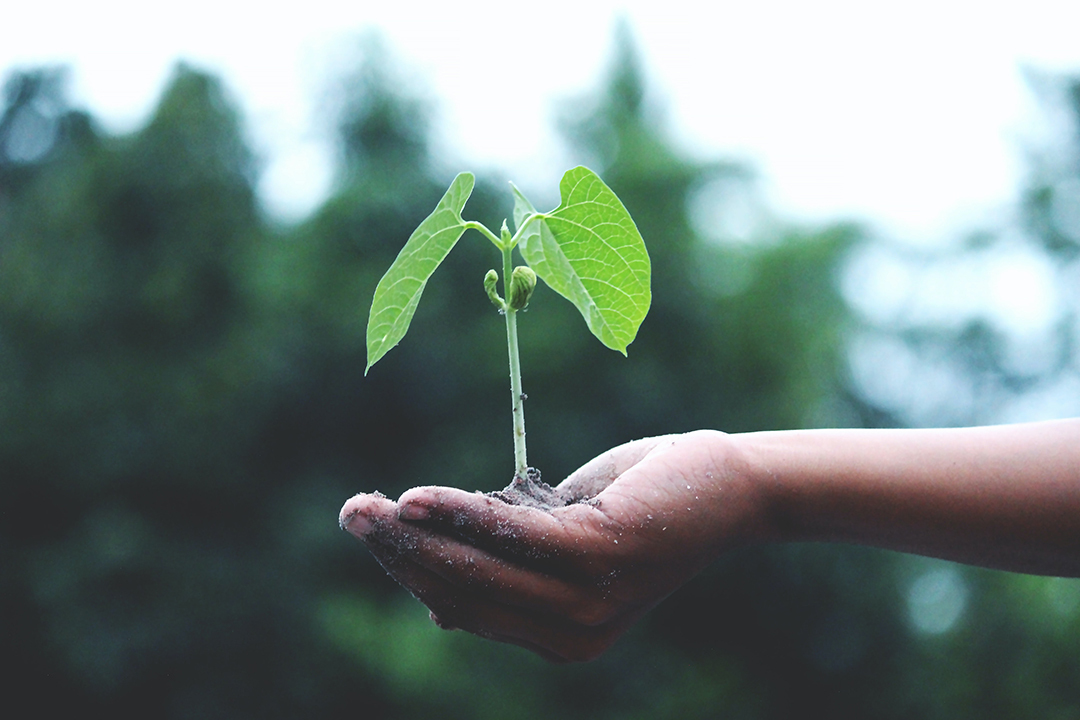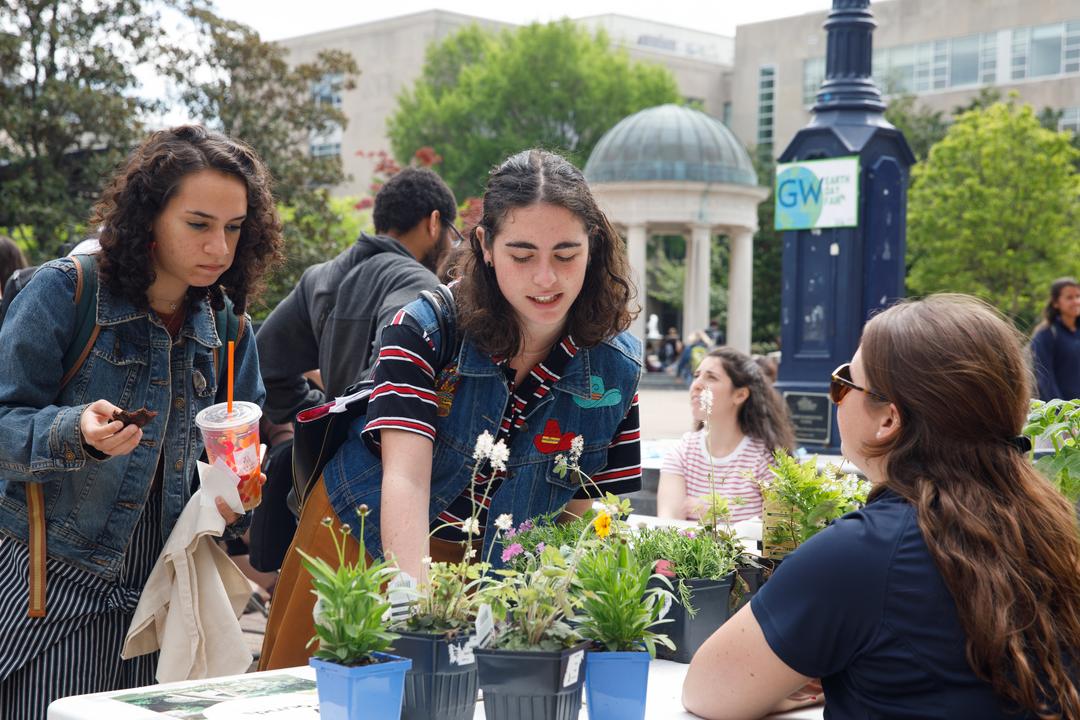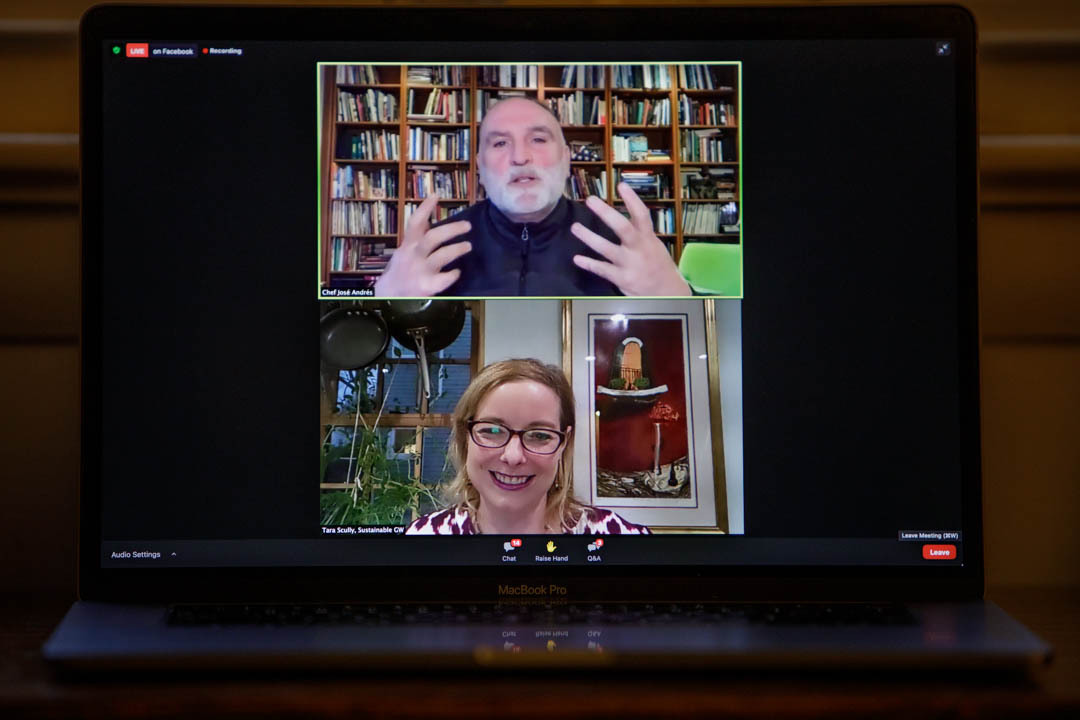By Briahnna Brown
Researchers across George Washington University investigate the changing planet in broad ways from the impact of climate change on our natural, social and built environments to understanding the planet’s water-carbon-energy cycles and how to stem biodiversity decline.
Many of the policies and solutions proposed and technologies developed to address the environmental ills plaguing our planet also present an opportunity to address longstanding societal ills, including how communities of color are impacted disproportionately by environmental and energy injustice.
For Earth Day 2021, GW Today spoke with three university researchers about their work and how they are investigating the disparate impacts of air pollution and distribution of energy outcomes and what their work is doing to correct the inequities.
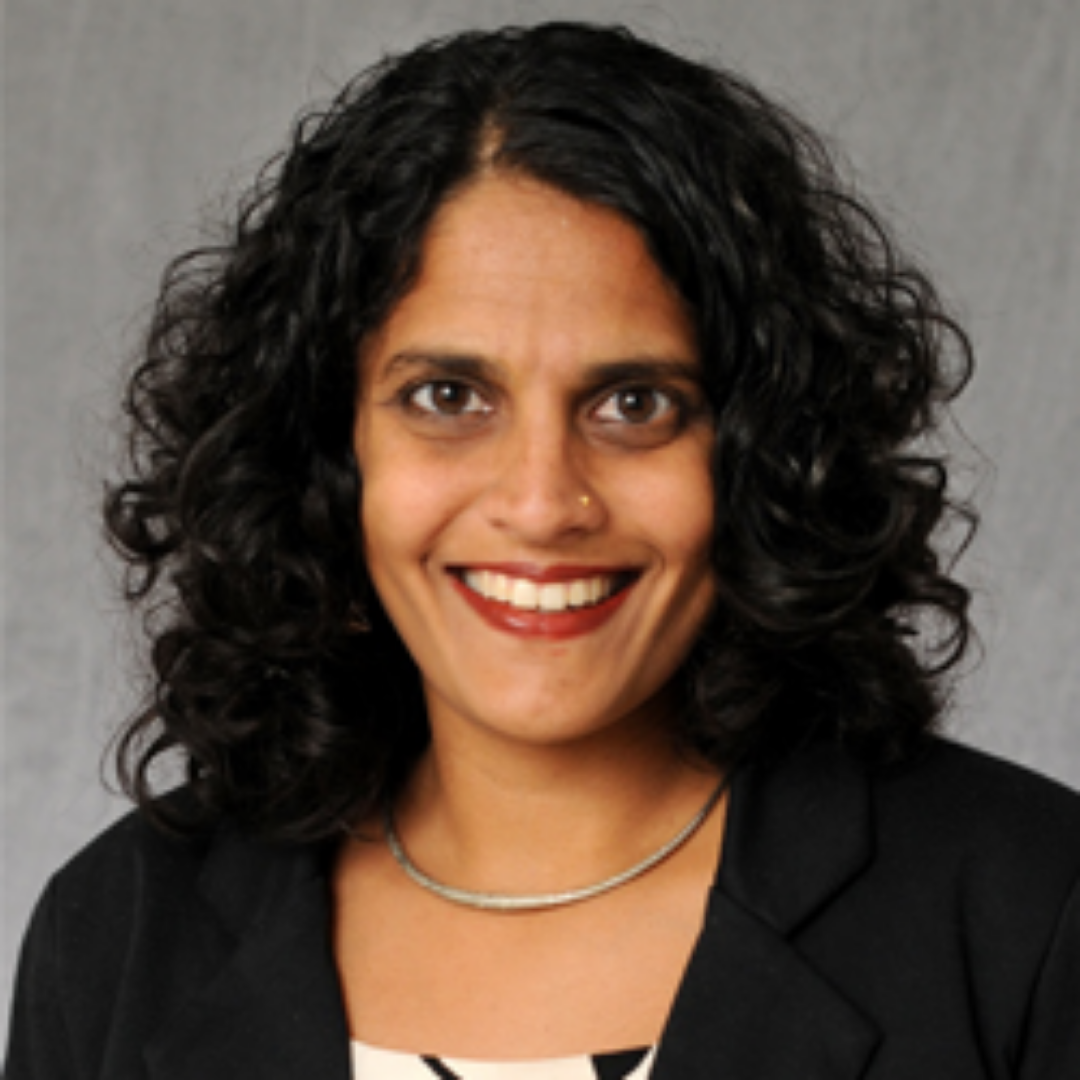 Agents of change
Agents of change
Ami Zota, an associate professor in GW’s Milken Institute School of Public Health Department of Environmental and Occupational Health, is empowering the next generation of environmental justice leaders through her Agents of Change initiative.
Her own research seeks to advance environmental justice and secure health equity through policy and communication, she said. Because of her research on broad and easily-accessible topics—such as how the beauty industry shapes racialized beauty norms and therefore the types of products people use and the toxic chemicals they are exposed to—Dr. Zota spends a lot of time talking to the media.
Working with the media inspired her to team up with Environmental Health News, an environmental media organization, to ensure more diverse voices were highlighted in the news. The more Dr. Zota was in that space, the more she realized that most of the thought leaders in environmental health are older white men.
“That really shapes society's relationship to science and their views about what environmentalism is or what climate change is,” Dr. Zota said. “I wanted to create a new cadre of more diverse and inclusive thought leaders in the space of environmental justice.”
Through Agents of Change, current doctoral students and early-career practitioners from historically excluded backgrounds in science and academia learn leadership and science communications skills through virtual training and collaborative writing workshops.
The fellows publish essays on environmental health and justice topics, such as Black food sovereignty. The program also recently launched a podcast that features cutting-edge leaders in environmental justice. They have many conversations about how their social identity informs their science and the way they engage with the world and how the world engages with them, Dr. Zota said.
“It's really about empowerment and also kind of giving them the space, the training and the feedback so they feel that they have the confidence to share their ideas in this way with the broader public,” Dr. Zota said.
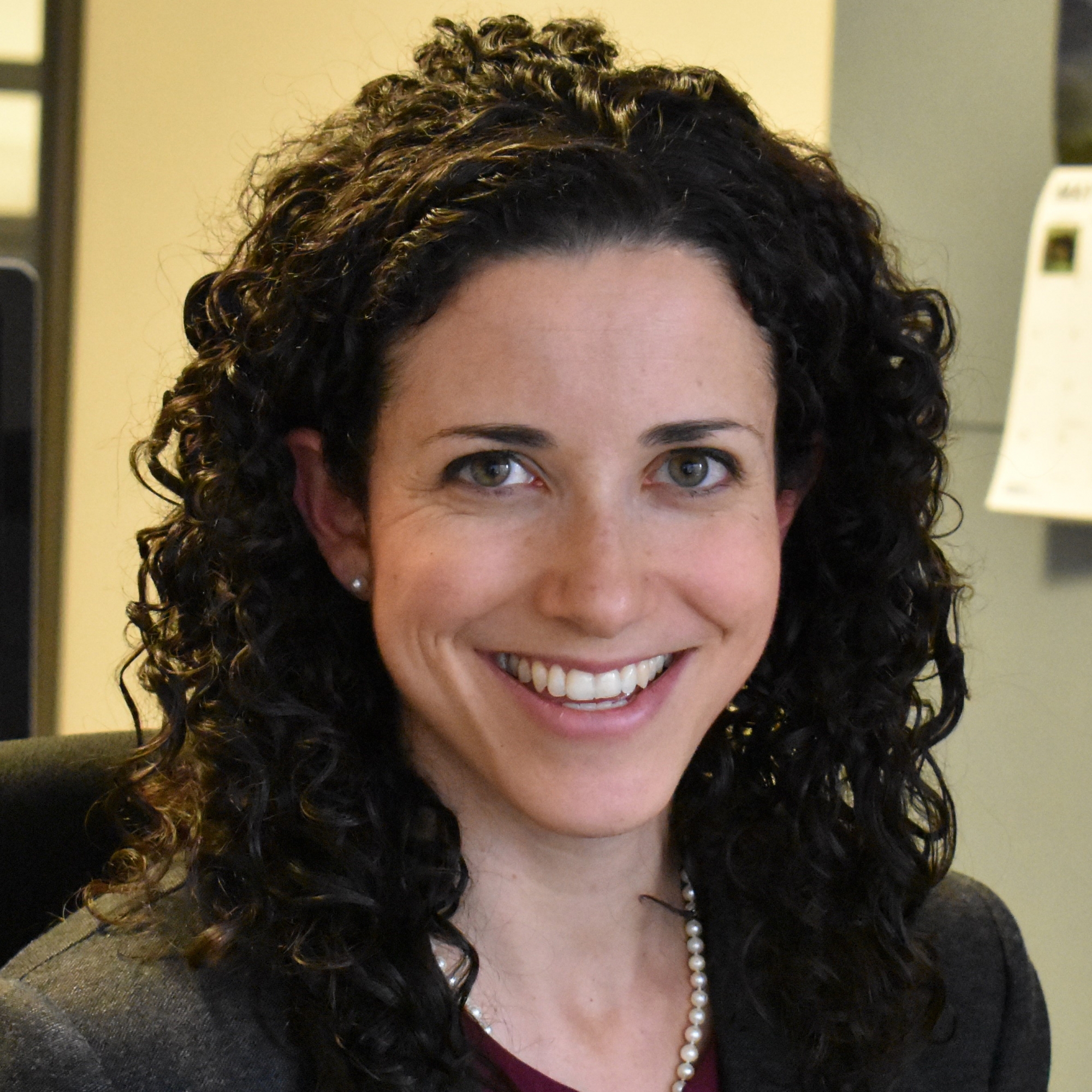 Air pollution and disparities
Air pollution and disparities
The COVID-19 pandemic has served as a natural experiment in air pollution’s disparate impact on low-income neighborhoods, said George Washington University professor Susan Anenberg.
Dr. Anenberg, who is an associate professor of environmental and occupational health and of global health at Milken Institute SPH, has been researching the health implications of air pollution and climate change and how they affect people differently depending on where they live and what resources are available to them.
Her team’s research, supported by NASA and led by post-doctoral scientist Gaige Kerr, indicates that communities of color, communities with lower levels of education and communities with lower household-income levels have significantly higher levels of nitrogen dioxide, a key air pollutant, compared to other neighborhoods. Even though stay-at-home orders and social distancing efforts helped lower those air pollutant levels early in the pandemic because fewer people were driving, the disparities in air pollution exposure persisted.
“What this tells us is that the disparity in air pollution exposure was so large prior to the pandemic that the nearly 50 percent drop in passenger vehicle traffic that we have been experiencing during the pandemic was not enough to eliminate those disparities,” Dr. Anenberg said.
In another study of Oakland, Calif., which was supported by the Environmental Defense Fund and led by Ph.D. candidate Veronica Southerland, her team used measurements from Google Street View cars equipped with air quality sensors to assess risk for air pollution-related health implications such as asthma and premature death. Their findings indicate that the spatial distribution of the people whose health is affected by air pollution is not the same spatial distribution of the air pollution itself, Dr. Anenberg said. The air pollution’s disparate impact could compound the disparate outcomes these communities are already experiencing because of the pandemic, she said.
“While air quality has improved dramatically over the last two decades in the U.S., it hasn’t improved equitably,” Dr. Anenberg said. “Some of the communities breathing the polluted air also have high rates of disease, making them more vulnerable to experience poor health from the air pollution exposure.”
These findings point to a need to look at sources of air pollution beyond just the road traffic from passenger vehicles, such as heavy duty trucking, Dr. Anenberg said, as well as other emission sources such as industrial and power plant emissions, all of which continue to contribute to these disparities. The Biden administration’s prioritization of environmental justice is exciting, she said, but because the current disparities are the results of decades of racially-biased policies in housing and in the placement of highways and industrial facilities, addressing it is a significant challenge.
Looking forward, Dr. Anenberg said, we have to transition away from fossil fuels to renewable energy sources that do not pollute, and those decisions have to be done equitably.
 Energy equity
Energy equity
Elliott School of International Affairs professor Robert Orttung is researching how to implement that type of energy justice in cities like Washington, D.C.
Dr. Orttung, who is also director of research for Sustainable GW, has been working on an interdisciplinary pilot project with faculty in GW Law, the School of Business, the Columbian College of Arts and Sciences and the School of Engineering and Applied Science, including SEAS professor Payman Dehganian who is innovating a new micro grid technology. Dr. Orttung is working with the rest of the team to determine how to implement those micro grids in places such as Wards 7 and 8 in D.C. because those communities could significantly benefit from the new technology.
With the assistance of M.A. student Lucy Hummer , Dr. Orttung is also developing a clear definition of energy justice to measure and evaluate the current energy systems in places such as Washington, D.C. So far, they have identified three key components of energy justice: local participation in the energy system, ensuring that energy benefits are equitable across economic and racial groups and overcoming past injustices when thinking about the future.
“How can we think through these investments in infrastructure so that everybody benefits from them and not just certain groups?” Dr. Orttung said. “What we're trying to do is link the energy back to all these other issues, such as jobs, transportation, education and health.”
One of the priorities for this project is that the research engage with the community and develop solutions based on community needs, Dr. Orttung said. The team is trying to bring that community engaged element to the forefront of the research so that the research they do is not just cutting-edge but also having a benefit for the people actually living in Washington, D.C. As the broader research community looks at energy equity issues, he said, there will be interest in more of this kind of research in the future.
“Everybody can get involved in thinking about ways that their research could really address these equity issues, whatever your research is, whether it's energy or other topics,” Dr. Orttung said. “I think that's where the future is, that's where there's going to be demand for young people coming into the workforce. I think that's where we are going to see growing demand for ideas.”


